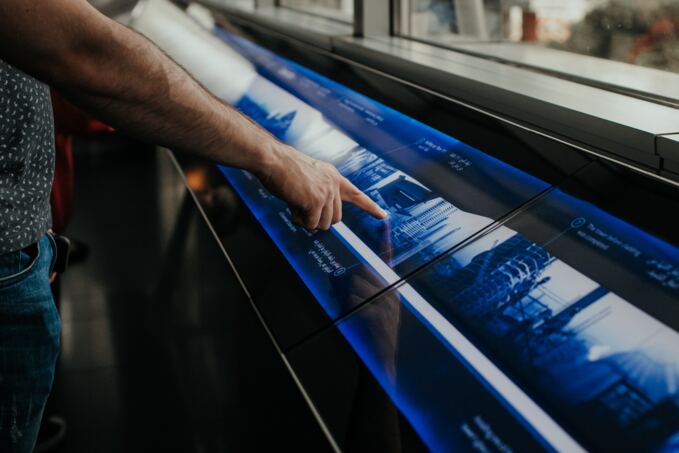Many people mainly differentiate between capacitive and resistive touchscreens when differentiating between touchscreen types. In addition to the projected capacitive and resistive touchscreen, we would also like to introduce you to the function of the infrared touchscreen and the optical imaging touchscreen.
1. the optical imaging touchscreen
An optical imaging touchscreen has several infrared cameras that detect when a shadow interrupts the infrared field. To do this, you need to be close enough to the screen; shadows caused by clouds, for example, do not hinder the functioning of the optical imaging touchscreen.
The touchscreen can use the shadow to determine where you touched the screen and how big the object you touched is. Optical imaging touchscreens are increasingly being used for large displays, such as interactive whiteboards in schools, but also for presentation purposes in conference rooms.
2. infrared touchscreen
Infrared touchscreens also create a field of infrared rays on the display. You can imagine this field as a grid of light beams. As soon as you move your finger on the screen, you interrupt the grid. The position of your hand can thus be determined. However, infrared touchscreens do not tolerate strong sunlight, as this interrupts their infrared field and they perceive a touch where there is none.
3. resistive touchscreen
Resistive touchscreens require firm pressure on the touchscreen to issue a command. You are probably familiar with resistive touchscreens from receiving parcels, when the small pen is pressed into your hand to sign on the resistive display. The sensors in resistive touchscreens detect pressure applied either by the stylus or by your finger and pass on the command.
4. projected capacitive touchscreen (PCAP)
Projected-capacitive touchscreens also create a grid that is interrupted by the touch of your finger. There is a conductive layer on the back of the display's glass screen that creates an electric field.
Since the human body also emits electrical voltage, this field is interrupted when you touch your finger, without you having to apply pressure to the touchscreen. Our smartphones today all have projected-capacitive touchscreens. Here too, touching several points at the same time is not a problem.
